Zandu Chyavanprash Avaleha
₹450.00 Original price was: ₹450.00.₹310.00Current price is: ₹310.00. Rs
PACK OF 900 GMS PASTE
Zandu Chyavanprash Avaleha is one of the anti-aging supplements, which is purely herbal in nature. It has Amla as its main ingredient. The rejuvenation of a sage by the name Chyawana Maharshi. Hence, the name – Chyawanprash.
Effect on dosas: balances Vata and Kapha. It has a minimal effect on Pitta balance
Zandu Chyavanprash Avaleha usage:-
- It is useful for coughs and colds.
- It is especially used in pulmonary tuberculosis. It helps in rejuvenation of old aged people and also in proper nourishment of young ones.
- It is effectively used in the treatments of throat infections, chest infections, Gout, and disease conditions involving urine.
- It improves intelligence (Medha), memory power, Skin luster, age, the strength of sense organs, immunity power, and appetite.
- It is a powerful antiaging herbal product. It also cures wrinkles.
Ingredients:-
Bilwa (Aegle marmelos), Agnimantha (Premna corymbosa), Shyonaka (oroxylum indicum), Gambhari (Gmelina arborea), Patala (stereospermum suaveolens), bala (sida cordifolia), Mashaparni (Teramnus labialis), Mudgaparni (Vina trilobata), Prishnaparni (Uraria picta), Shalaparni (Desmodium gangeticum), Pippali (Long pepper), Gokshura (Tribulus terrestris), Brihati (solanum indicum), kantakari (solanum xanthocarpum), karkata Shrungi (pistasia integerrima), Taamalaki (phyllanthus fraturnus), Draksha (dry grapes), jeevanti (Leptodenia reticulata), Pushkara(Inula racemosa), Agaru (Aquilaria agallocha), Hareetaki (Terminalia chebula), Ruddhi (Habenaria intermedia), Jeevaka (Microstylis muscifera), Vrishabhaka (Microstylis wallichi), Shati (Hedychium spicatum), Musta (cyperus rotundus), Punarnava (Boerhaavia diffusa), Meda (Polygonatum cirrhifolium), Ela (Elettaria cardamomum), Chandana (Santalum album), Utpala (Nymphaea stellata), Vidari (Ipomea digitata), Vrushamula (Adhatoda vasica), kakoli (Lilium poilyphyleum), Kakanasika (Martynia diandra) – all these herbs are taken 50 grams each. in coarsel powdered form.
Amla – 5 kg (fresh fruit)
First, the above said a group of herbs is mixed in 13 liters of water. Amla is tied in cloth making it able to hang. At the mouth of the vessel, a stick is placed and the cloth pack containing Amla is kept hanging so that the pack of amla is immersed in the water. (This type of process is called Swedana) the vessel is subjected to heat. After sufficient boiling, the cloth packing is taken out. From it, Amla is taken out, seeds are removed and the boiled pulp part of Amla is made into a paste. This paste is fried with 300 ml each of ghee and sesame oil.
The water is filtered. It is taken in another vessel and the paste of amla is added to it. To this vessel, 2.5 Kg of sugar is added and this mixture is heated in mild heat. Upon slow heating, the liquid slowly starts solidifying.
Once the semisolid state is achieved, the vessel is taken out of the fire and stirred well. Upon self-cooling, 300 grams of honey, 200 grams of Tugakshiri, 100 grams of Pippali (Long pepper fruit), Twak, Patra and Ela, and Nagakeshara are added- 50 grams each. the mixture is continuously sitrred well to get the Chyavanprash.
Brand
Zandu
Be the first to review “Zandu Chyavanprash Avaleha” Cancel reply
You must be logged in to post a review.
Related products
Immune System
Immune System
Immune System
Immune System
Immune System
Immune System
Immune System
Immune System


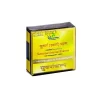
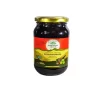
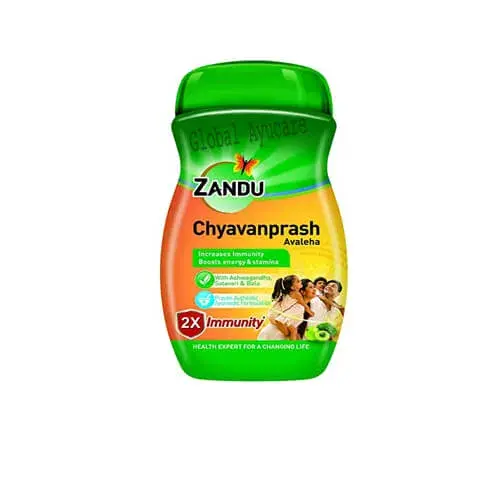

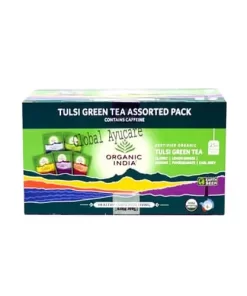
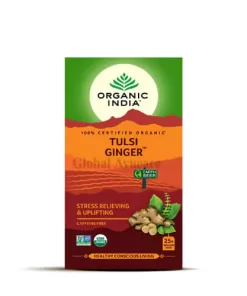


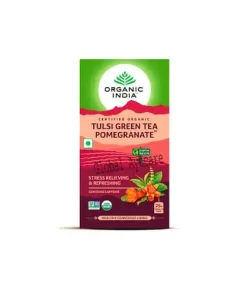
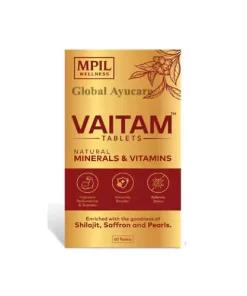
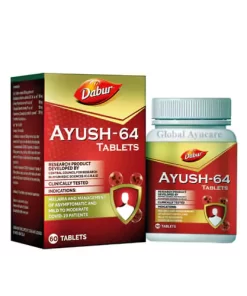

Reviews
There are no reviews yet.